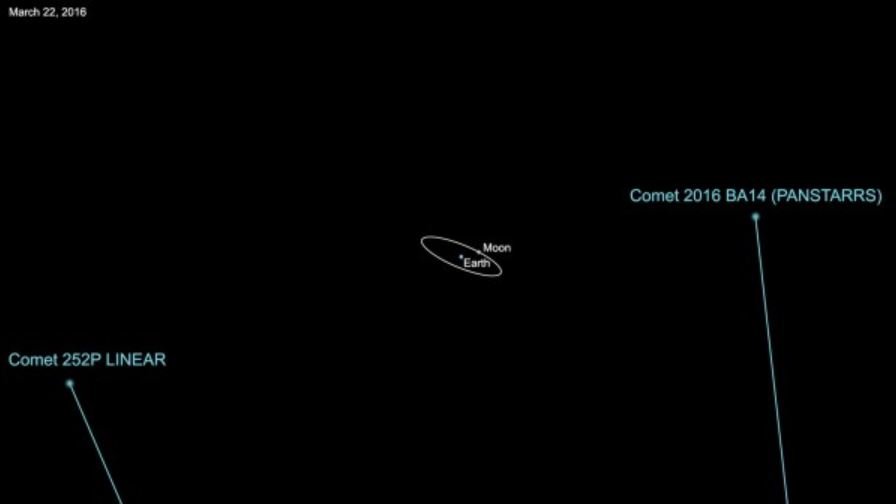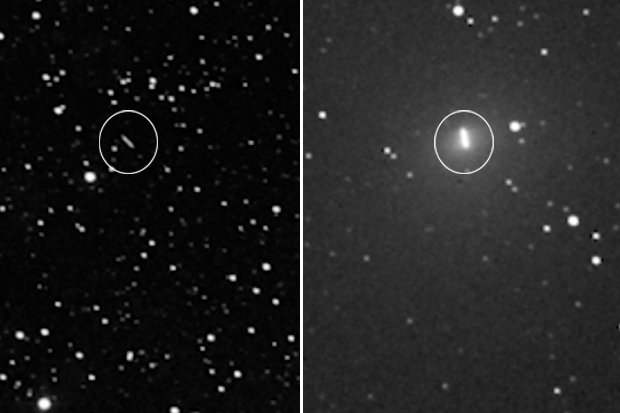
At the time of its closest approach, the comet was about 2.2 million miles (3.5 million kilometres) away, making it the third-closest flyby of a comet in recorded history. First place goes to Comet D/1770 L1 (Lexell), which shaved Earth at just 5.9 lunar distances in July 1770.
For the second-closest flyby of a comet, we have to go back 650 years. Comet 55P/1366 U1 (Temple-Tuttle) is calculated to have passed by Earth in October 1366 at 8.9 lunar distances, about 1,410,100 miles (2.3 million km).

The fly-by of Comet P/2016 BA14 was doubly remarkable because a SECOND comet made a close pass at the same time. Just one day earlier, the 750-foot-wide (230 m) Comet 252P/LINEAR came within about 3.3 million miles (5.2 million km) of Earth, making it the fifth closest flyby of Earth by a comet in recorded history.
The two comets' orbits are so similar that astronomers have suggested BA14 is a fragment that broke off of 252P.
While this recent double flyby is one for the record books, yet another comet recently gave Mars an even closer shave. In October 2014, Comet Siding Spring came within just 87,000 miles (140,000 km) of Mars' surface, throwing the planet's magnetic field into turmoil and blowing away part of its atmosphere. And that event wasn't a one-off brush with space debris: astronomers have identified at least 400 recent impact craters on Mars.
All of the above assumes a fundamental difference between asteroids and comets. In fact, there isn't. Comets are essentially glowing asteroids due to significant electric potential difference between the rock and surrounding space.

Have the numbers of asteroids/comets in the inner solar system increased all of sudden? It's hard to say, but astronomers are certainly observing more of them closer to us than ever before.
Whatever about near-misses of larger objects, direct hits from smaller objects almost certainly are on the rise. NASA is keeping very quiet about it, but the case for a dramatic increase in meteor fireballs in the last decade is supported by NASA's own data.
In summary, the third and fifth closest comet fly-bys in recorded history occurred within 24 hours of each other last week. One of those comets was only discovered two months ago. This double event happened in the context of an apparent increase in asteroid activity in our near-space environment in recent years, and in the context of a definite increase in meteor fireball sightings.
It's getting awfully crowded in our skies...



Reader Comments